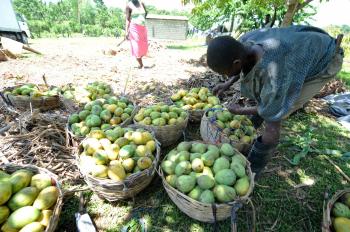Mango Industry in Haiti—Good Prospects if It Can Overcome Challenges
Haiti’s mango production has a long way to go to become a profitable business meeting international standards.

Mangoes are harvested at a farm on July 6 in the small community of Mirebalais, approximately 60 km northeast of Port-au-Prince. Thony Belizaire/AFP/Getty Images
|Updated:






